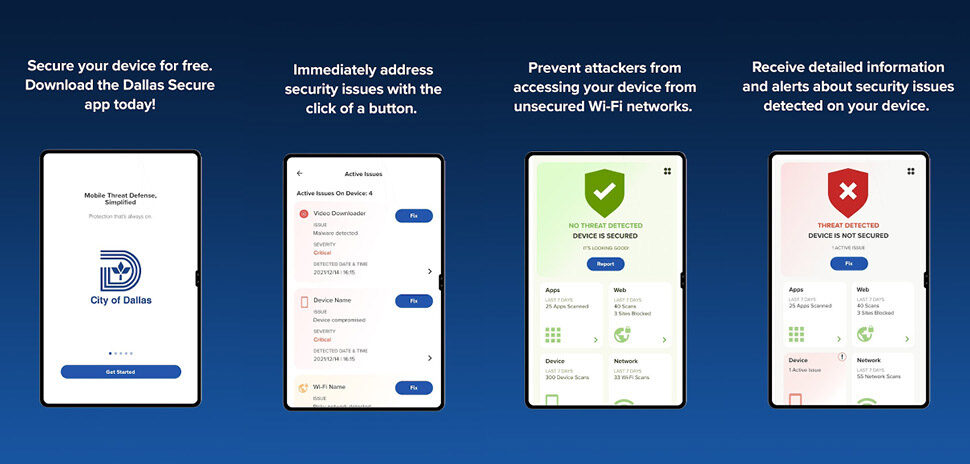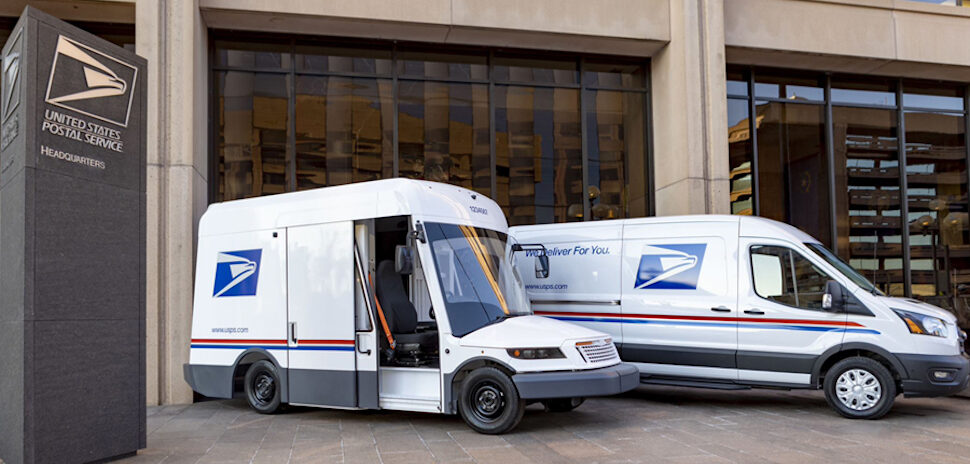The U.S. Postal Service and U.S. Postal Inspection Service have announced they are tightening security to protect postal employees and safeguard mail and packages in Dallas-Fort Worth and across the nation.
The move is a result of increases in threats and attacks on letter carriers and in mail fraud incidents, which have escalated with a national rise in crime, the agencies said. The agencies recently updated Congress on the problems.
“As crime rises, so do the threats against our public servants,” Postmaster General and CEO Louis DeJoy said in a statement. “The men and women of the Postal Service are walking our nation’s streets every day to fulfil our mission of delivering mail and packages to the American people. Every Postal employee deserves to work in safety and to be free from targeting by criminals seeking to access the public’s mail.”
Postal Inspection Service Chief Gary Barksdale said multiple steps are taking place to ensure security.
“We’re doubling down on our efforts to protect our Postal employees and the security of the mail. We are hardening targets—both physical and digital—to make them less desirable to thieves and working with our law enforcement partners to bring perpetrators to justice,” Barksdale said in a statement.
Rising rates of postal robberies and thefts
The Postal Service said that incidents of letter carrier robberies are on the rise nationwide. In 2022, 412 USPS letter carriers were robbed on the job. With 305 incidents reported in the first half of fiscal year 2023, these incidents are increasingly more prevalent, the service said.
The agency reported an increase in high volume mail theft incidents from mail receptacles including blue collection boxes. There were 38,500 cases in fiscal year 2022 and more than 25,000 in the first half of this year. The Postal Service said it will continue to work with its unions and management associations on training and employee education for letter carriers and other postal workers.
The Postal Service and the Postal Inspection Service said they are expanding their Project Safe Delivery crime prevention initiative to protect Postal employees and facilities, prevent mail and package theft, and enforce the law against individuals who perpetrate crimes against Postal employees or engage in mail and package theft.
The goal of Project Safe Delivery is to reduce letter carrier robberies and mail theft.
As part of Project Safe Delivery, USPS and USPIS are taking action to harden physical targets against criminal activity and reduce criminal acts against postal employees including:
- 12,000 high security blue collection boxes to be installed nationwide. The Postal Service is hardening blue collection boxes making access to their contents more difficult for criminals. These boxes are now being deployed in high security risk areas through the next fiscal year. The Postal Service will continue to evaluate replacing additional existing blue collection boxes with these enhanced boxes.
- 49,000 Electronic locks to replace antiquated arrow locks. There has been an increase in letter carrier robberies nationwide where criminals are targeting letter carriers for their Arrow and Modified Arrow Lock (MAL) Keys. Criminals use Arrow and MAL keys to steal mail from secure mail receptacles to commit financial crimes, including altering checks to commit check fraud. To make Arrow Keys less valuable for criminals, the Postal Service will replace 49,000 antiquated arrow locks with electronic locks. New locks have been installed in select cities with installation to occur in additional major metropolitan areas soon. The Postal Service and the Postal Inspection Service are also increasing Arrow Key accountability reviews in select high Postal crime areas.
Preventing change of address fraud
The Postal Service processed more than 33 million change of address (COA) transactions in FY222. The majority of COA frauds are driven by an identity theft motive separate from the Postal Service. The Postal Service is not the intended target but implicated as the fraudster intercepts financially oriented mail, credit cards or checks.
The Postal Service said it is strengthening authentication processes for all methods of COA — electronic, and hard copy format whether by mail or in-person.
Actions include:
- In April, the Postal Service implemented dual authentication Identity Verification Services for online change of addresses transactions to provide enhanced security controls to reduce fraud.
- Effective May 31, the Postal Service will offer enhanced in-person change of address transactions at Post Offices and retail outlets. COA customers can verify their identity by presenting an approved form of identification to a retail clerk.
- Postal Service customers seeking a COA will now receive a validation letter at their old address and receive an activation letter at their new address.
- As an additional safeguard, the Postal Service will no longer accept third-party change of address submissions.
Curtailing counterfeit postage
In FY2022, the Postal Service and Postal Inspection Service seized more than 340,000 packages with counterfeit postage and more than 7.7 million counterfeit stamps with an estimated $7.8 million loss avoidance for the Postal Service.
Expanded actions to crack down on fraudulent postage include:
- Postal Service interdictions of packages with counterfeit labels affixed. The Postal Service will fully exercise new authority to take possession and dispose of packages identified with counterfeit postage.
- Reviews of shipments on Postal Service docks and during warehouse outreach visits. Shut down of websites and closure of eCommerce accounts selling counterfeit postage.
- Engagement and partnership with eCommerce companies to disrupt activity
- Customs and Border Protection (CBP) collaboration
- Promotion of the Inspection Service’s rewards program which provides rewards for information leading to the arrest and conviction of a person that unlawfully uses, reuses, or forges postage stamps, postage meter stamps, permit imprints, or other postage; or uses, sells, or possesses with the intent to sell any used, forged, or counterfeit postage stamp or other postage.
What customers can do to protect mail and letter carriers
Throughout the year, the Postal Inspection Service said it will continue to partner with federal, state, and local authorities to enforce the laws and bring criminals to justice. The Postal Service and Postal Inspection Service will continue to adapt to evolving security threats and implement expanded measures to safeguard Postal employees and preserve the security of the mail that Postal Service customers expect and deserve, the agencies said.
Customers can take several steps to protect their mail and their letter carriers, including:
- Don’t let incoming or outgoing mail sit in your mailbox. You can significantly reduce the chance of being victimized by simply removing your mail from your mailbox every day.
- Deposit outgoing mail through a number of secure manners including inside your local Post Office or at your place of business or by handing it to a letter carrier.
- Sign up for Informed Delivery and get daily digest emails that preview your mail and packages scheduled to arrive soon.
- Become involved and engaged in your neighborhood via neighborhood watches and local social media groups to spread awareness and share information.
- Keep an eye out for your letter carrier. If you see something that looks suspicious, or you see someone following your carrier, call 911.
- Customers are encouraged to report stolen mail as soon as possible by submitting an online complaint to the Postal Inspection Service at www.uspis.gov/report or by calling 877-876-2455.
![]()
Get on the list.
Dallas Innovates, every day.
Sign up to keep your eye on what’s new and next in Dallas-Fort Worth, every day.

































